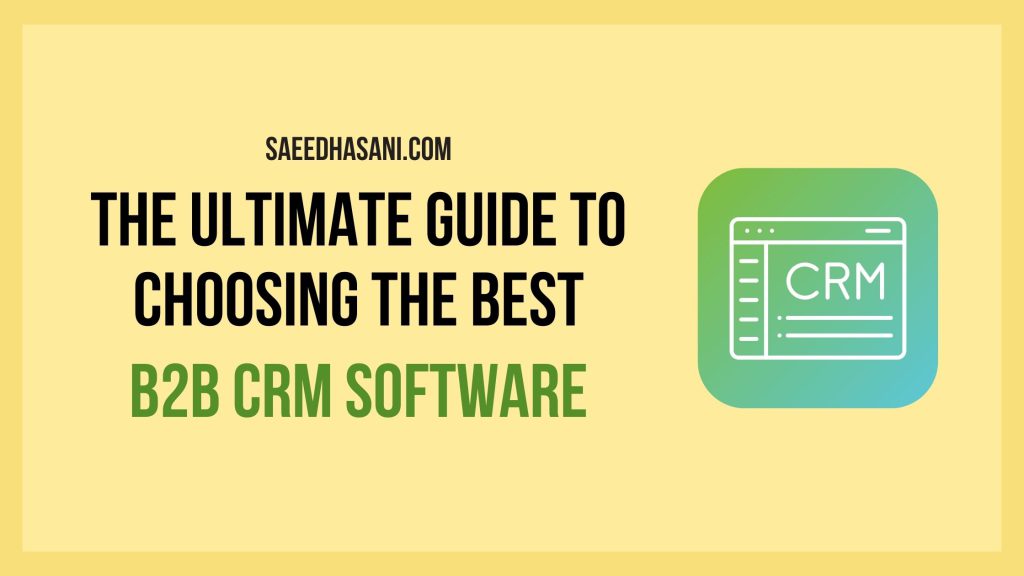Power of Agile Methodology: 10 Benefits and Beyond

In the ever-evolving realm of software development, change isn’t a choice; it’s a necessity. This is where Agile methodology swoops in like a tech-savvy superhero. But what exactly is Agile, and why is it crucial in the modern software development landscape?
Agile is more than just a buzzword; it’s a dynamic approach that emphasizes flexibility, collaboration, and customer-centricity. It’s like the Swiss Army knife of project management, adaptable to various industries and scenarios.
In this blog post, we’re about to embark on a journey into the world of Agile methodology. We’ll delve into its core principles, discover its real-world applications, and explore how it’s transforming the software development landscape. So buckle up because we’re about to explore Agile’s role in shaping the future of software development.
The Fundamentals of Agile Methodology
Let’s dive into the fundamentals of Agile methodology for our Project Manager friend!
Agile methodology and its principles
Alright, so Agile methodology, my PM buddy, is basically a way of approaching project management that’s all about flexibility and adaptability. It’s like the opposite of those rigid, step-by-step waterfall methods.
In a nutshell, Agile is all about delivering value to your customers sooner rather than later. It’s like that old saying, “Don’t put all your eggs in one basket.” Instead of trying to plan out every single detail of a project from the start (which rarely works out perfectly), Agile says, “Let’s break this thing into smaller pieces and tackle them one at a time.” These smaller pieces are often referred to as “iterations” or “sprints.”
The big idea here is that you can respond to changes and feedback as you go along rather than being stuck with a rigid plan that’s hard to change. So, Agile is all about being flexible, collaborative, and focused on delivering what the customer really wants.
Key concepts of Agile: iterations, collaboration, and customer-centricity
Now, let’s talk about some of the key concepts that make Agile tick.
Iterations: These are like mini-projects within your big project. Instead of trying to do everything at once, you break it down into smaller, manageable chunks. Each iteration typically lasts a few weeks, during which the team works on a specific set of tasks or features. At the end of each iteration, you should have a potentially shippable product increment. It’s like building a puzzle one piece at a time.
Collaboration: Agile is all about teamwork. It’s not just the developers doing their thing and then tossing it over the wall to the testers. Everyone works together throughout the project. Regular meetings, like daily stand-ups, help keep everyone on the same page. Collaboration is key to quickly addressing issues and making sure the project stays on track.
Customer-Centricity: This one’s a biggie. Agile is laser-focused on delivering value to the customer. You’re not just building a product based on what you think the customer wants; you’re constantly getting their feedback and adjusting your course accordingly. It’s like having a GPS for your project, where you can reroute if necessary to reach your destination (a successful project) faster and more efficiently.
Agile Manifesto and its significance
Here comes the manifesto, which is kind of like the Bible of Agile.
So, the Agile Manifesto was written by a group of software developers who wanted to capture the core principles of Agile in a simple and memorable way. It consists of four key values and twelve principles:
Values:
- Individuals and interactions over processes and tools.
- Working software over comprehensive documentation.
- Customer collaboration over contract negotiation.
- Responding to change over following a plan.
These values basically sum up what Agile is all about. It emphasizes people and their interactions, practical results, customer involvement, and adaptability.
Now, the twelve principles expand on these values and provide more guidance on how to implement them. They cover things like delivering working software frequently, welcoming changing requirements even late in development, and maintaining a sustainable pace of work.
The significance of the Agile Manifesto is that it provides a clear philosophical foundation for Agile methodology. It’s like a North Star for Agile practitioners, reminding us of what truly matters in our projects. So, as a Project Manager, it’s essential to keep the Agile Manifesto in your back pocket to guide your team and keep everyone aligned on the Agile path.
And there you have it, the basics of Agile in a casual, PM-friendly tone. Agile is all about staying nimble, working closely with your team, and keeping your customers happy.
The Advantages of Agile Methodology
Let’s chat about the perks of Agile methodology.
Benefits of Agile methodology in software development
1. Rapid adaptation to changes: Picture this: you’re cruising along in your project, and suddenly, BAM! New requirements drop from the sky. In the traditional waterfall approach, that would be a nightmare. But with Agile, it’s a piece of cake. Agile teams can pivot and adapt faster than a Formula 1 car in a tight corner. You can incorporate changes without derailing the whole project, keeping your stakeholders happy.
2. Improved customer satisfaction: Who doesn’t love happy customers, right? Agile makes them grin from ear to ear. By involving customers throughout the project and delivering small, valuable chunks of functionality regularly, you’re essentially giving them a sneak peek and asking, “Is this what you want?” Customers feel heard and get what they really want, leading to satisfied smiles.
3. Enhanced collaboration: Agile is like a team-building retreat on steroids. Daily stand-up meetings, regular reviews, and constant communication create an environment where your team members are like a well-oiled machine. They collaborate seamlessly, share ideas, and tackle challenges together. It’s like having a family reunion every day but without the awkward silence.
4. Increased product quality: Quality isn’t just a buzzword in Agile; it’s the holy grail. With shorter development cycles and a strong focus on testing, you catch bugs early in the game. Think of it like quality control at a factory; you don’t wait until the car is built to check if it has wheels. This leads to a product that’s not just functional but top-notch.
5. Transparency and visibility: In Agile, you’ve got nothing to hide. Progress is out there for everyone to see, like a reality TV show but without the drama. Regular demos, burndown charts, and open communication channels provide a clear picture of where things stand. No more guessing games or late-night email marathons trying to figure out what’s going on.
Real-world examples showcasing the advantages
Example 1: Netflix’s Agile success: Remember when Netflix started as a DVD rental service? Well, they saw the streaming future and shifted gears faster than you can say “binge-watch.” Agile allowed them to adapt to the changing tech landscape swiftly. Now, they’re a global streaming giant, thanks to their agility.
Example 2: The healthcare revolution with Epic Systems: Epic Systems, a healthcare software company, embraced Agile to improve patient care. They used Agile to develop electronic health records (EHR) software that adapts to the ever-evolving healthcare industry. Their Agile approach has transformed patient data management, making healthcare more efficient and patient-centered.
Example 3: The Agile giant, Spotify: Music streaming powerhouse Spotify attributes its success to Agile principles. They divided their development teams into small, autonomous squads, each responsible for a piece of the product. This setup allows them to innovate rapidly, experiment with features, and cater to diverse user needs, all while keeping the music playing smoothly.
So there you have it, PM pal! Agile is like the secret sauce for modern project management, delivering adaptability, customer happiness, collaboration, quality, and transparency. Plus, it’s proven its worth in the real world with some big-name success stories.
Agile vs. Waterfall – A Comparative Analysis
Let’s break down the epic showdown between Agile and Waterfall for our Project Manager buddy.
Contrasting Agile methodology with traditional Waterfall approach
Alright, imagine you’re planning a cross-country road trip. Waterfall is like mapping out your entire journey from start to finish, booking all the hotels, and scheduling gas stops before you even hit the road. You’re locked into that plan no matter what.
Now, Agile is more like hopping in the car with a general destination in mind but being open to detours. You might decide to spend an extra day in a cool town you stumbled upon, or you might take a scenic route instead of the highway.
In project management speak:
Waterfall is all about detailed planning upfront. You define every task, create a massive project plan, and then start executing. There’s little room for change once you’re on the road.
Agile, on the other hand, embraces change. You start with a basic plan and adjust it as you go based on what you discover and feedback from your passengers (a.k.a. stakeholders).
Advantages and disadvantages of Waterfall
Advantages of Waterfall:
- Predictability: Waterfall gives you a clear roadmap from the get-go. You know what to expect and when to expect it. It’s like following a recipe step by step.
- Documentation: It’s great for projects where detailed documentation is crucial, like in highly regulated industries (think aerospace or pharmaceuticals). You’ve got paperwork for days.
Disadvantages of Waterfall:
- Rigidity: If something unexpected happens (and it usually does), Waterfall can be a real pain to change. It’s like trying to switch your flight itinerary after the plane has taken off.
- Customer Disconnect: Since you don’t involve customers until the end, there’s a risk they might not like what they see. Imagine cooking a meal for someone and not asking if they even like the ingredients.
Why Agile is often considered superior
Now, here’s where Agile starts to shine:
- Flexibility: Agile is the king of adaptability. You can pivot, adjust, and optimize as you go. It’s like having a GPS that reroutes you around traffic jams in real-time.
- Customer Collaboration: Agile keeps customers in the loop throughout the journey. You’re not building something in isolation and hoping it’ll be what they want. You’re constantly checking in with them and adjusting based on their feedback.
- Faster Value Delivery: Agile gets you delivering value sooner. Instead of waiting months or even years, you’re handing out goodies (working features) in a matter of weeks.
- Quality Control: Agile has quality baked in. With regular testing and feedback loops, you catch issues early, making it easier to maintain top-notch quality.
- Transparency: Agile projects are like open books. Everyone can see what’s happening, and that visibility helps prevent misunderstandings and keeps everyone on the same page.
So, PM pal, Agile often gets the spotlight because it’s better suited for today’s fast-paced, ever-changing world. It’s not about saying Waterfall is bad; it’s just recognizing that Agile brings some serious advantages to the table, especially when dealing with complex projects or uncertain requirements. It’s like choosing a car for your road trip; sometimes, the rugged SUV (Agile) is the better choice over the luxury sedan (Waterfall).
Agile Methodology in Action
Let’s dive into the world of Agile methodology in action.
Real-world examples of organizations successfully implementing Agile
You know what they say, “The proof is in the pudding,” or in this case, “The proof is in the Agile.” Let’s take a look at some organizations that have rocked the Agile boat and come out ahead.
1. Spotify: This music streaming giant has playlists filled with Agile goodness. They adopted the “Spotify Model,” a unique twist on Agile. They organized their teams into small, autonomous squads, like bands working on their albums. This approach allowed them to quickly adapt to changing user preferences and offer personalized music experiences. It’s like having a hit single for every listener.
2. Amazon: The e-commerce juggernaut didn’t stop at selling books. They applied Agile principles throughout their operations, from web development to warehouse management. Amazon’s ability to launch new features and services at a rapid pace is a testament to Agile’s effectiveness. It’s like they have a never-ending Black Friday sale but for software and services.
3. Airbnb: Want to see Agile in action for hospitality? Look no further than Airbnb. They’ve used Agile to continuously enhance their platform, adapting to user needs and market trends. With frequent releases and iterative improvements, they’ve become a global leader in the sharing economy. It’s like renting out your spare room but on a planetary scale.
Case studies of Agile’s impact on project outcomes
Alright, let’s get into the nitty-gritty and check out some Agile case studies that tell the tale of better project outcomes.
1. The FBI’s Virtual Case File (VCF): The FBI’s VCF project initially followed the traditional Waterfall approach, and, well, it was a mess. Cost overruns, delays, and poor results. Then they switched to Agile, and things turned around. The Agile approach allowed them to prioritize and deliver essential features faster. The end result? A successful case management system that improved their efficiency in tackling crime.
2. Salesforce and Agile Transformation: Salesforce, a leader in customer relationship management software, decided to embrace Agile across its organization. This transformation led to quicker product releases and better alignment with customer needs. They saw a substantial increase in customer satisfaction and product quality. It’s like turning a decent song into a chart-topping hit.
3. General Electric’s Agile Journey: GE, known for its massive industrial projects, embarked on an Agile journey to manage complex projects more efficiently. By breaking down large projects into smaller, manageable parts, they reduced project risk and improved collaboration among their global teams. It’s like assembling a massive puzzle piece by piece, and it actually fits together!
These real-world examples and case studies show that Agile isn’t just a buzzword; it’s a game-changer for organizations looking to adapt to the ever-changing business landscape, deliver value to customers, and achieve better project outcomes. So, PM pal, whether you’re in tech, hospitality, or even law enforcement, Agile can be the secret sauce to your project success.
Addressing the Disadvantages of Agile
Let’s dive into the “Addressing the Disadvantages of Agile” section, tailored for our Project Manager buddy.
A balanced view of Agile, acknowledging its challenges
Agile, my PM pal, is like that shiny sports car that everyone wants to drive. It’s fast, it’s flashy, and it turns heads. But, just like that sports car, it’s not without its quirks and challenges. Let’s give you the full picture.
1. Rapid Changes Can Be a Double-Edged Sword: One of Agile’s strengths is its adaptability, but it can also be a bit overwhelming. Constantly shifting priorities can make you feel like you’re on a roller coaster without a seatbelt.
2. Customer Involvement Isn’t Always Easy: Getting your customers deeply involved sounds fantastic in theory, but in practice, it can be like herding cats. Some clients might not have the time or expertise to engage fully.
3. Documentation Can Be Neglected: Agile often prioritizes working software over documentation. While that’s great for progress, it can leave you with some pretty skimpy project documentation. It’s like having an incredible dish with no recipe to recreate it.
4. Team Burnout is Real: Agile’s fast pace can sometimes feel like a never-ending sprint. Team burnout can happen if you don’t manage workloads and expectations carefully.
Strategies to mitigate Agile’s disadvantages
Now, let’s talk about how to keep that Agile sports car running smoothly without skidding off the road.
1. Embrace Hybrid Approaches: Agile doesn’t mean you have to throw out everything else. Sometimes, blending Agile with more structured approaches (like Waterfall) can help strike a balance. It’s like adding a touch of classic rock to your pop playlist.
2. Set Clear Expectations: Make sure everyone, especially your customers, understands what Agile entails. Clarify their roles and responsibilities to ensure active participation. Think of it like setting the rules before a game; it prevents confusion later.
3. Don’t Skip on Documentation Entirely: Agile’s love for working software is fantastic, but don’t forget to document essential aspects. Create just enough documentation to keep your project well-documented without overdoing it. It’s like jotting down the critical ingredients of your secret sauce.
4. Watch for Burnout: Agile isn’t a sprint; it’s more like a series of manageable marathons. Keep an eye on your team’s workload and well-being. Regular retrospectives can help identify and address burnout before it becomes a problem.
Agile is like that high-performance sports car that needs the right driver and some tune-ups now and then. Acknowledge the challenges, but with the right strategies, you can enjoy the thrill of Agile while avoiding the pitfalls.
Agile in Software Development
Let’s chat about Agile in the world of software development.
Specific benefits of Agile in software development
Alright, let’s talk turkey. Agile in software development is like having a magical toolbox filled with tools that make your life easier. Here are some specific benefits:
- Faster Time-to-Market: Agile is like the Usain Bolt of software development. It gets your product out there quicker by breaking the project into smaller, manageable chunks.
- Customer Satisfaction: Agile puts your customers in the driver’s seat. They get to provide feedback early and often, ensuring that the final product is exactly what they wanted. It’s like custom-tailoring a suit; it fits perfectly.
- Flexibility and Adaptability: Agile is the software equivalent of a chameleon. It can change direction and color quickly. When new requirements pop up or priorities shift, Agile can adapt without breaking a sweat.
- Transparency: Agile is like a glass-bottom boat in crystal-clear waters. It provides transparency into the project’s progress, so there are no nasty surprises lurking beneath the surface.
Agile methodologies such as Scrum, Kanban, and Extreme Programming (XP)
Think of Agile methodologies as different flavors of ice cream. They all fall under the Agile umbrella but offer unique tastes and textures:
- Scrum: Scrum is like a well-organized relay race. It divides your project into time-boxed sprints, typically 2-4 weeks long. You have daily stand-up meetings to keep everyone on track, and at the end of each sprint, you’ve got a potentially shippable product increment.
- Kanban: Kanban is like a sushi conveyor belt. It’s all about visualizing your work on a board and limiting work-in-progress. You pull tasks as you have capacity, ensuring a smooth and steady flow of work.
- Extreme Programming (XP): XP is like the adrenaline junkie of Agile. It’s all about fast feedback, continuous integration, and test-driven development. Think of it as the roller coaster ride of Agile methodologies.
Agile’s role in addressing software development challenges
Agile isn’t just a buzzword; it’s a superhero cape for software development challenges. Here’s how:
- Managing Changing Requirements: Software requirements are as fickle as the weather. Agile’s flexibility allows you to adapt to changing requirements without derailing the project. It’s like changing your outfit based on the weather forecast.
- Quality Assurance: Agile takes quality seriously. With its emphasis on regular testing and continuous improvement, you’re like a chef tasting your dish throughout cooking to make sure it’s perfect.
- Communication Breakdowns: Agile promotes collaboration. Regular meetings and open communication channels prevent misunderstandings and keep everyone on the same page. It’s like having a chat with your team every day to ensure everyone’s aligned.
- Unpredictable Challenges: In software, you never know when a bugzilla-sized problem might rear its head. Agile’s iterative approach allows you to address issues incrementally, like fighting off a swarm of mosquitoes one at a time.
Agile in software development is like having a Swiss Army knife for tackling project challenges. It’s all about speed, adaptability, and keeping the customer smiling.
Agile Methodology Beyond Software Development
Let’s talk about how Agile isn’t just for software development and how it can be a game-changer in various industries.
Exploring the applicability of Agile in various industries
Alright, Project Manager, here’s the scoop: Agile isn’t just a one-trick pony for software. It’s like that versatile tool you keep in your toolbox and use in different situations. Here’s how Agile can stretch its legs in various industries:
- Manufacturing: In manufacturing, Agile can be the secret sauce for optimizing production lines. It helps in responding quickly to changes in demand, reducing waste, and improving product quality. It’s like having a lean, mean production machine.
- Marketing and Advertising: The world of marketing is all about being responsive to trends and customer feedback. Agile principles can help marketing teams launch campaigns, test strategies, and adjust on the fly. It’s like running a marketing marathon with pit stops for refueling and course corrections.
- Healthcare: Even in healthcare, Agile is making waves. Hospitals use Agile methodologies to improve patient care, streamline administrative processes, and adapt to changing regulations. It’s like performing surgery with precision and flexibility.
- Education: Agile’s adaptive nature is a great fit for education. It’s used in curriculum development, where educators can adjust the content and teaching methods based on student feedback. It’s like customizing each student’s learning journey.
- Construction: Yes, even in construction, Agile can shine. It helps project teams adapt to changes, manage resources more efficiently, and deliver projects on time and within budget. It’s like building a skyscraper one floor at a time, adjusting as you go.
Benefits of Agile in non-software domains
Now, let’s talk about the goodies that Agile brings to the party in these non-software domains:
- Faster Adaptation: In any industry, change is the only constant. Agile’s ability to adapt quickly helps organizations stay ahead of the curve and remain competitive.
- Customer-Centricity: Whether you’re building cars or teaching students, your customers’ needs matter. Agile ensures that you’re always delivering what your customers truly want.
- Enhanced Collaboration: Agile fosters teamwork and collaboration among different departments or stakeholders. It’s like having everyone in the same boat, rowing in the same direction.
- Efficiency and Transparency: Non-software industries can benefit from Agile’s focus on efficiency and transparency. You can track progress, identify bottlenecks, and make data-driven decisions.
- Quality Improvement: Just like in software, Agile in non-software domains ensures that quality is a top priority. It’s like making sure the ingredients in your dish are top-notch before serving it.
Agile isn’t a one-trick pony. It’s a versatile superstar that can shine in various industries. If you can adapt and apply its principles creatively, you might just find yourself leading the charge in a whole new world of project management.
Conclusion
In conclusion, Agile methodology offers a transformative approach to modern software development, characterized by its agility, customer-centricity, and commitment to excellence. Its key benefits, including rapid adaptation, enhanced collaboration, customer satisfaction, and improved efficiency and quality, make it a compelling choice for organizations navigating the ever-changing digital landscape.
It’s not just a methodology; it’s a mindset shift that empowers organizations to thrive amidst uncertainty. Therefore, organizations are encouraged to embrace Agile as not just the best approach but the future of software development, guiding them toward innovation, customer delight, and meaningful solutions.







Responses